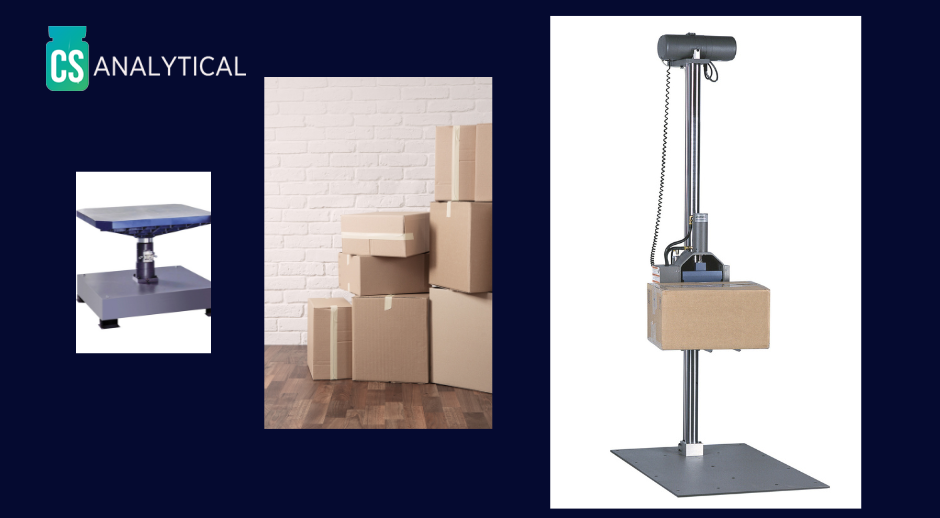 Package (shipment) Distribution Testing is designed to simulate the distribution environment in a controlled laboratory setting where processes (methods) can mimic the hazards that the shipment may endure in the real-world setting. For most Pharma, Biotech and Medical Device clients, the most common testing method followed is the ASTM D4169 procedures. In February 2024, the ASTM released ASTM D4169-23. On March 27, 2024, the ASTM released a new and updated version – ASTM D4169-23e1 which included an additional editorial change. This post will outline some of the key changes to the test procedure that occurred with these two revisions noting that the most current one that should be referenced for all testing is ASTM D4169-23e1.
Package (shipment) Distribution Testing is designed to simulate the distribution environment in a controlled laboratory setting where processes (methods) can mimic the hazards that the shipment may endure in the real-world setting. For most Pharma, Biotech and Medical Device clients, the most common testing method followed is the ASTM D4169 procedures. In February 2024, the ASTM released ASTM D4169-23. On March 27, 2024, the ASTM released a new and updated version – ASTM D4169-23e1 which included an additional editorial change. This post will outline some of the key changes to the test procedure that occurred with these two revisions noting that the most current one that should be referenced for all testing is ASTM D4169-23e1.
Sub-section 3.2.7 – A new definition for “Small and Lightweight Packages” is outlined for packages weighing under 10 lbs (4.53 kgs) with a volume below 2.0 ft³ (0.056 m³). The purpose of this clarification is to provide adequate guidance when determining the maximum stack height (H) factor. Previously this was listed as Note 3 in the ASTM D4169-22 revision and this update is intended to more clearly define the requirements.
Section 11, Schedule B – Warehouse Stacking & Schedule C – Vehicle Stacking – Section 11.4.1 of the new ASTM D4169 revision now states “Typical shipping density (freight) factors for mixed load and LTL shipments are from 10 lb/ft3 (160 kg/m3), which represents the 40th percentile to 30 lb/ft3 (481 kg/m3, which represents the 95th percentile of measured top load packages. If the average shipping (freight) density factor (Mf) for the specific distribution system is not known, a value of 12.0 lb/ft3 (192.2kg/m3) is recommended.” An example of how to interpret this change can be viewed in the following example:
If you have multiple years of use of the same shipment container with no compression issues of note, it may be ideal to justify the continued use of the shipping density of 10. If an improved and higher margin is so desired, then the use of a shipping density of 12 may prove to be the best approach under the new guidelines outlined. For comparison purposes to understand the impact of this change, using an Assurance Level of I under ASTM D4169-22, a 12 x 12 x 12 inch box that weighs 30 pounds would have required a vehicle stacking top load of 800 lbf. Using the new and updated guidelines ASTM D4169-23, this same package would require a vehicle stacking top load of 960 lbf. Applying the revision to a larger shipment container also outlines the impact of this change. A 54 x 12 x 12 inch box that weighed 30 pounds, which would be required to assume a vehicle stacking top load of about 3,600 lbf under D4169-22 would nor require a vehicle stacking top load of 4,320 lbf. at the same assurance level.
Section 11.4.2 – This section was revised to better outline when the user may consider reducing H from the recommended default height of 108 inches. As referenced in the procedure, the Maximum Stack Height (H) Decision Matrix should be used to determine the appropriate height to be used. In relation to the safety factor “F”, this new update includes clarifying terms to help the user better select which Shipping Unit Construction to use. This version will address if product support is unknown, removing the calculation and changing it to use Type 1 Factors in these cases.
ASTM F2825 Reference – Of special note is the added reference to ASTM F2825 Standard Practice for Climatic Stressing of Packaging Systems for Single Parcel Delivery. Under Section 6 Conditioning, this included reference states that when testing is done using DC-13, the F2825 environmental conditioning may also be applicable and should be considered. This enables the testing using more realistic conditions as the temperatures to be used are not absolute extremes but based upon the recorded worldwide daily averages in cold and hot climates.
CS Analytical offers complete ISTA and ASTM D4169 testing programs for a wide variety of product and package types covering a broad spectrum of distribution modalities. Our team has experience designing and developing test programs that meet the specific need of the client, the package and the expected distribution environment. In addition, we offer a host of custom approaches that can be applied to any type of product. The team can also coordinate unique USP 1207 Container Closure Integrity Test programs that add a package distribution component to a standard CCI leak testing program which is now a key European Regulatory Requirement published in Annex 1.

